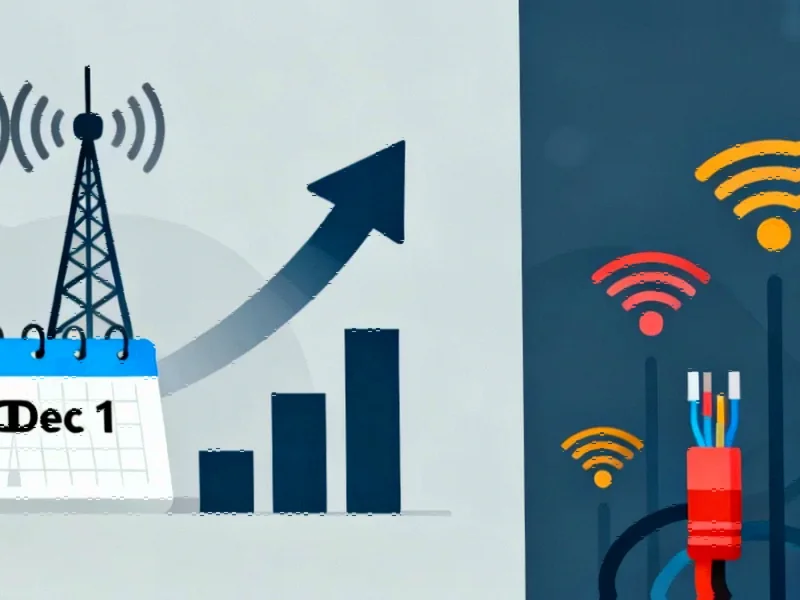Another Year, Another Increase
AT&T customers are facing yet another price increase for home internet services, marking the third consecutive year the telecommunications giant has implemented a $5 monthly rate hike. The increase, scheduled to take effect December 1, 2025, follows similar increases implemented in 2023 and 2024, creating a pattern that has many subscribers questioning the long-term affordability of their internet service.
According to industry reports, AT&T has begun notifying affected customers via email about the impending change. The consistent annual increases represent a significant cumulative burden for households already grappling with inflation across multiple spending categories.
The Justification Behind Repeated Increases
AT&T cites “operational costs” as the primary driver behind the latest price adjustment, stating that the increase is necessary to maintain service quality and network infrastructure. This explanation mirrors justifications used in previous years, though the company hasn’t provided detailed breakdowns of which specific costs have risen sufficiently to warrant annual increases.
The telecommunications giant does highlight potential mitigation strategies for affected customers. “Those impacted may want to explore our AutoPay and Paperless Billing options, which can provide meaningful discounts on monthly bills,” an AT&T representative noted in their official statement. However, many long-term customers point out that these discount programs were already available during previous price increases.
Broader Industry Context
AT&T’s pricing strategy reflects broader market trends affecting multiple technology sectors. Similar pricing pressures are visible across the industry landscape, from semiconductor manufacturers facing production challenges to financial institutions adapting to new regulatory requirements.
Even communication platforms are implementing changes that effectively increase costs for heavy users, suggesting a widespread industry shift toward monetization strategies that prioritize revenue stability over user affordability.
Competitive Alternatives Emerge
For customers frustrated by repeated price increases, several competitive options have emerged in the home internet space. T-Mobile and Verizon now offer both fiber and 5G home internet plans, often at price points significantly lower than traditional providers. The expansion of 5G infrastructure has particularly enabled more viable wireless alternatives to conventional broadband services.
Mint Mobile’s recent entry into the home internet market with plans starting at $30 monthly represents another potential option for budget-conscious consumers. However, availability varies significantly by region, and network performance may not match fiber optic connections for bandwidth-intensive applications.
Strategic Implications
The pattern of annual price increases suggests a strategic shift in how telecommunications companies approach pricing. Rather than occasional substantial hikes, providers appear to be normalizing smaller, predictable annual increases that may encounter less customer resistance while generating consistent revenue growth.
This approach aligns with strategic recalculations occurring across the technology sector as companies adapt to changing economic conditions and investment requirements. The need to fund infrastructure upgrades while maintaining profitability appears to be driving these pricing decisions across multiple technology segments.
Consumer Response and Future Outlook
Customer reactions to the announcement have been largely negative, with many expressing frustration about the cumulative effect of three consecutive annual increases. “What started as a reasonable monthly fee has become significantly more expensive without corresponding improvements in service quality,” noted one long-term AT&T customer in online forums.
Industry analysts suggest this pattern of regular price adjustments will likely continue as companies face rising infrastructure, labor, and regulatory compliance costs. For consumers, the era of stable internet pricing appears to be ending, replaced by a new normal of annual increases that require careful budget planning and regular evaluation of alternative providers.
As the telecommunications landscape continues to evolve, customers may need to adopt more flexible approaches to their internet service, potentially switching providers more frequently to access introductory pricing or exploring emerging technologies that could disrupt traditional broadband business models.
This article aggregates information from publicly available sources. All trademarks and copyrights belong to their respective owners.
Note: Featured image is for illustrative purposes only and does not represent any specific product, service, or entity mentioned in this article.



